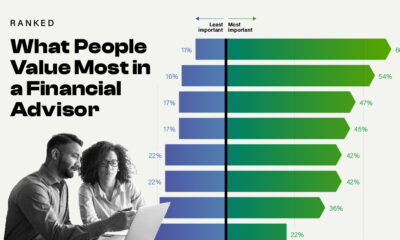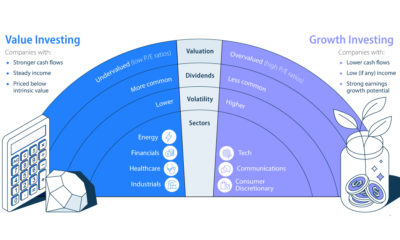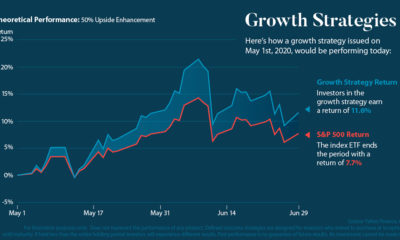This Markets in a Minute Chart is available as a poster.
The Psychological Pitfalls of a Market Cycle
When making investment decisions, investors have a wide variety of tools at their disposal.
For example, fundamental analysis can be used to estimate a stock’s intrinsic value. Technical analysis, on the other hand, requires an investor to analyze price movements to identify trends.
While these tools can form the basis of a sound investment thesis, their effectiveness is limited by one’s emotions. In today’s Markets in a Minute chart from New York Life Investments, we illustrate how sentiment can get in the way of rational decision making.
The Mentality of the Herd
Allowing emotions to dictate decisions is a common mistake made by many investors, yet they may not even realize it.
Herd mentality, which refers to an individual’s tendency to be influenced by his or her peers, often leads to heightened emotions and less rational decision making. In the context of investing, this tendency becomes particularly troublesome—market developments can be sensationalized in the media, by online blogs, or through word-of-mouth.
Mapping the Sentiment Cycle
Similar to how markets move in a series of patterns and cycles, the behavior of the investor herd tends to follow a continuous “sentiment cycle.”
1. Market Recovery
Today’s chart begins at the recovery stage of a market cycle, and assumes that emotional investors have recently suffered losses.
Although a support level has been clearly established, the herd is likely too afraid to act. Their fear of making another mistake causes them to miss the optimal window to re-enter the market.
2. Market Peak
Only after prices have substantially risen does the herd begin to take notice. Many of these investors will experience the fear of missing out (FOMO), and overzealously begin buying. Valuations at this point are likely no longer attractive.
3. Market Decline
What comes up must come down, and prices eventually peak as demand weakens. Investors who become too emotionally attached can find it difficult to cut their losses early.
4. Market Trough
By this point, the sentiment cycle has run a full course. Investors who followed the herd have likely sold at a loss, and will be reluctant to re-enter the market again.
Navigating Rough Waters
Investors are prone to falling into the sentiment cycle at any time, but especially when things get rough. So-called black swan events, such as the COVID-19 pandemic, can bring volatility to markets on short notice. In these situations, it’s common for investors to flock to safe-haven assets.
Since COVID-19 was classified as a global pandemic, money market funds have been in extremely high demand:
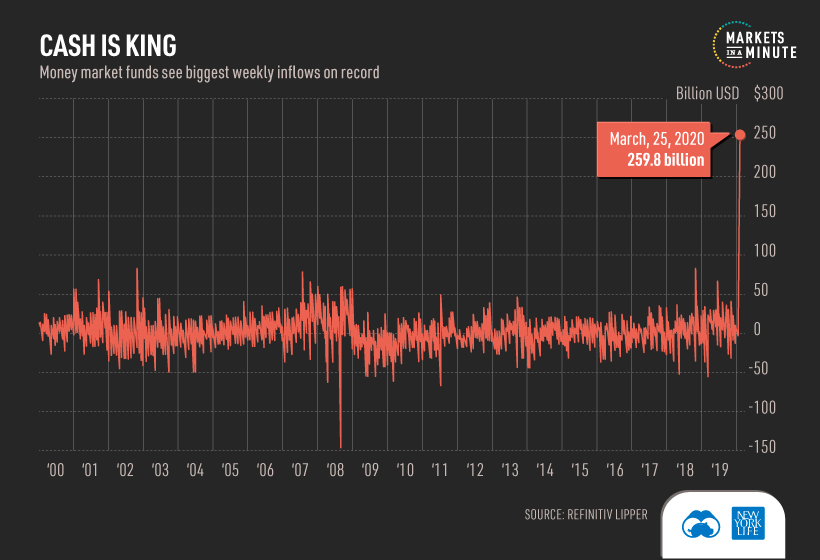
While this dramatic shift does have its merits—equity markets have seen deep selloffs—it may be a tad drastic. Governments around the world are making serious commitments to providing economic stimulus. In the U.S., the CARES Act amounts to a massive $2 trillion, and provides direct payments to families as well as support for both the private and public sector.
Keeping a Clear Mind
Now that we’ve outlined the psychological pitfalls of a market cycle, what can one do to break away from the herd?
A good start is becoming aware of the cognitive biases we commonly exhibit when investing. These biases can be linked to many of the emotions outlined in today’s chart. Finally, maintaining a growth mindset and learning from our past mistakes can also help us make better decisions in the future.

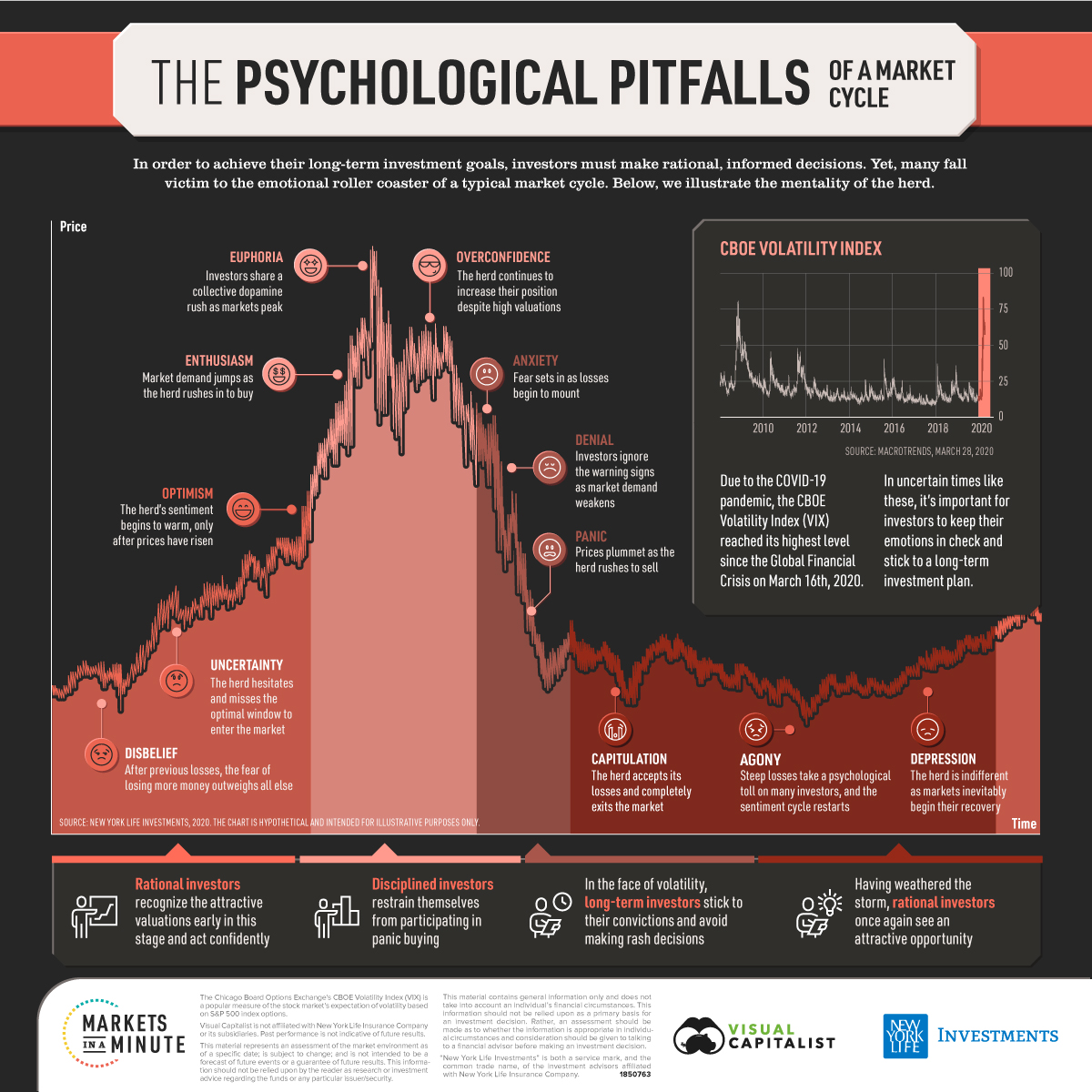


 Infographics2 years ago
Infographics2 years ago
 Markets in a Minute2 years ago
Markets in a Minute2 years ago
 Markets in a Minute2 years ago
Markets in a Minute2 years ago
 Infographics2 years ago
Infographics2 years ago
 Markets in a Minute1 year ago
Markets in a Minute1 year ago
 Markets in a Minute2 years ago
Markets in a Minute2 years ago
 Infographics1 year ago
Infographics1 year ago
 Markets in a Minute2 years ago
Markets in a Minute2 years ago




